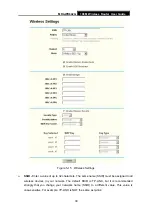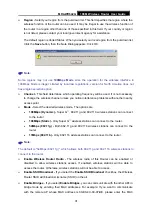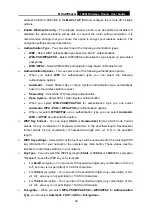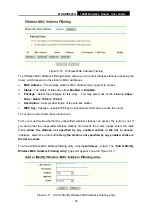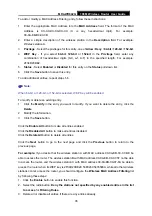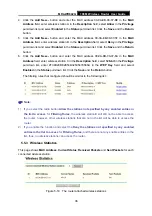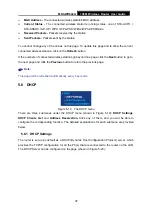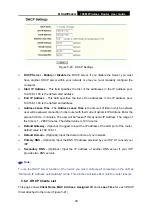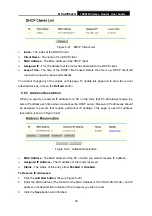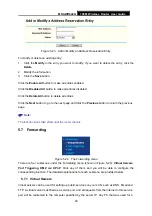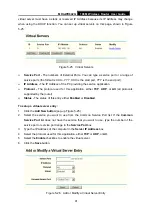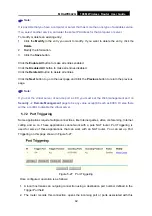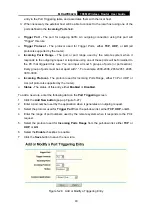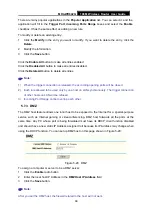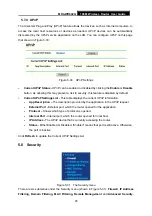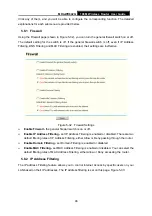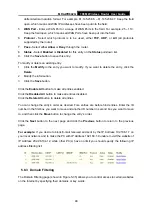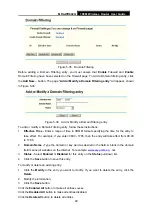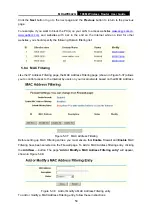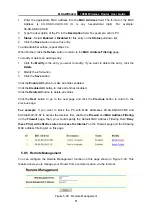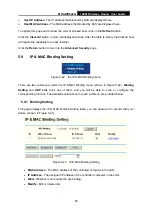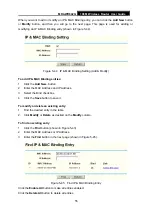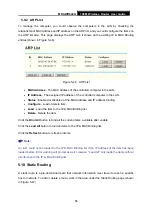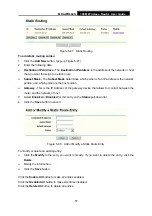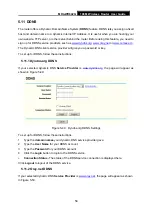
MR4-WR642G
108M Wireless Router User Guide
43
entry in the Port Triggering table, and associates them with the local host.
3. When necessary the external host will be able to connect to the local host using one of the
ports defined in the
Incoming Ports
field.
¾
Trigger Port -
The port for outgoing traffic. An outgoing connection using this port will
"Trigger" this rule.
¾
Trigger Protocol -
The protocol used for Trigger Ports, either
TCP
,
UDP
, or
All
(all
protocols supported by the router).
¾
Incoming Ports Range -
The port or port range used by the remote system when it
responds to the outgoing request. A response using one of these ports will be forwarded to
the PC that triggered this rule. You can input at most 5 groups of ports (or port section).
Every group of ports must be set apart with ",". For example, 2000-2038, 2050-2051, 2085,
3010-3030.
¾
Incoming Protocol -
The protocol used for Incoming Ports Range, either TCP or UDP, or
ALL (all protocols supported by the router).
¾
Status -
The status of this entry either
Enabled
or
Disabled
.
To add a new rule, enter the following data on the
Port Triggering
screen.
1. Click
the
Add New button
.(pop-up Figure 5-27)
2. Enter a port number used by the application when it generates an outgoing request.
3. Select the protocol used for
Trigger Port
from the pull-down list, either
TCP
,
UDP
, or
All.
4. Enter the range of port numbers used by the remote system when it responds to the PC's
request.
5. Select the protocol used for
Incoming Ports Range
from the pull-down list, either
TCP
or
UDP
, or
All.
6. Select
the
Enable
checkbox to enable.
7. Click
the
Save
button to save the new rule.
Figure 5-28 Add or Modify a Triggering Entry


